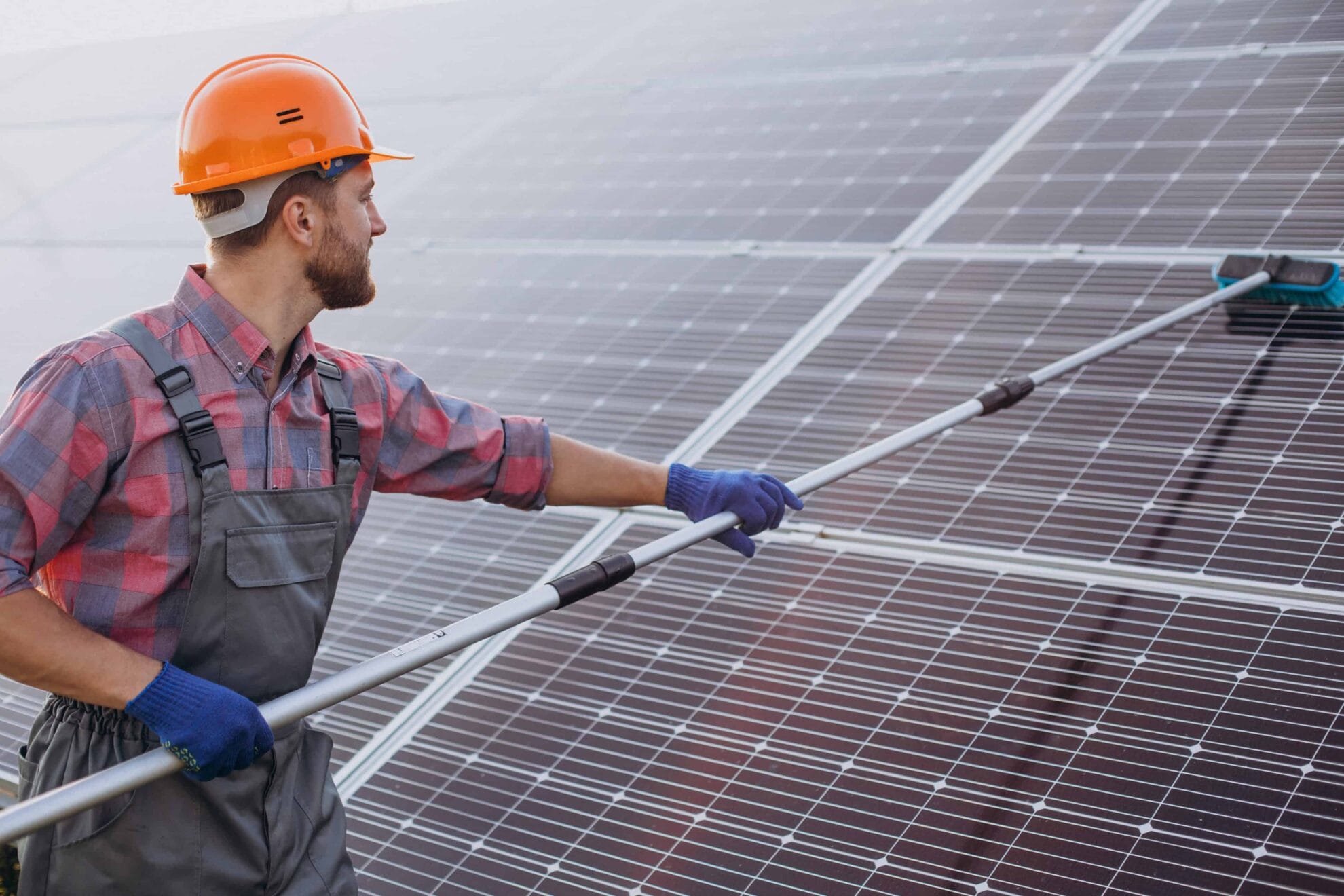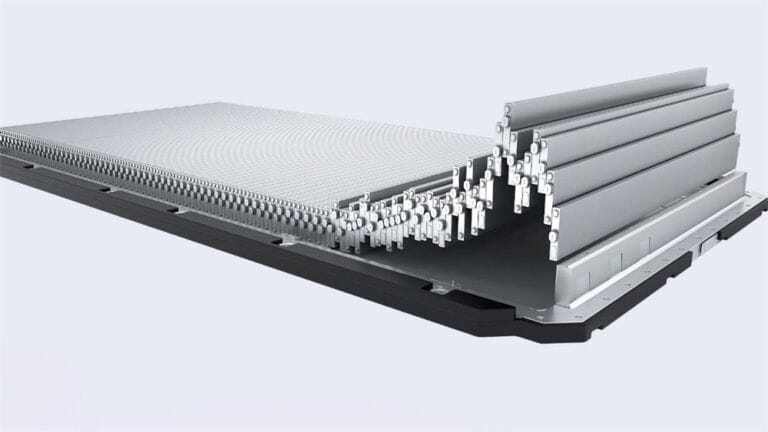
Easy ways to maintain solar panels to improve the output all year round

Want more solar power without adding more panels? Smart maintenance gets you there.
Dust, pollen, and bird droppings block sunlight, and that means less energy.
Depending on your climate and roof tilt, soiling can trim output by 5% to 25%. Research by NREL highlights how small layers of grime can build up and reduce energy generation over time.
The good news is that most systems only need light cleaning one to three times a year, plus a few quick checks.
This guide walks through quick, safe steps that work in every season. You will learn how often to clean, what tools to use, what to watch in your app, and which small upgrades keep animals and debris away.
When you keep your solar panels clean, they can capture more sunlight and make more clean energy. This simple habit boosts your system’s output and makes year-round maintenance easier.
Clean Solar Panels and Get a Quick Output Boost
A clean solar panel surface lets in more sunlight, which gives you more clean energy. Dirt acts like a tiny shade. The effect can be modest or big, depending on where you live.
Before cleaning, always turn off your system as per the manufacturer’s manual, and never climb onto steep or slippery roofs. If your panels are hard to reach, if the roof is steep, or if there is a heavy buildup of dirt, it’s best to hire a certified solar cleaning service. They use eco-safe products and soft equipment to ensure safe and efficient cleaning. Identifying these situations will help you decide when DIY is unsafe or insufficient.
For most homes, a simple rinse and wipe does the trick. For light dust, a gentle spray from a garden hose is enough. Sticky spots need a gentle soak and wipe. Avoid cleaning under the hot sun to prevent water spots. After even one quick clean, many owners see an immediate bump in daily kWh.
How Often Should You Clean Your Panels
Most solar systems perform well with one to three cleanings per year.
Homes near highways, farms, or coastal areas might need a monthly rinse due to higher dust or salt exposure. Rain helps, but it does not remove sticky grime or droppings. After dust storms or smoke events, check your solar system monitoring mobile application and clean if you see an unusual drop in output.
| Climate or Condition | Suggested Cleaning Frequency |
| Typical suburban area | 1 to 3 times per year |
| Dusty or agricultural zones | Monthly light rinse |
| Coastal with salt spray | Monthly light rinse |
| High pollen areas | After major pollen waves |
| After smoke or storms | Inspect, then rinse if needed |
Safe Cleaning Steps and important points to consider while you clean the panel
- Early or late: clean in the early morning or evening when panels are cool.
- Power down: follow your inverter or system manual to turn off safely.
- Gentle rinse: Use a garden hose on low pressure to wash off loose dirt.
- Soft touch: Use a soft brush or microfiber mop with a bucket of clean water.
- No harsh stuff: skip abrasive pads, pressure washers, or strong chemicals.
- Spot control: If you have hard water, squeegee or towel dry to prevent mineral spots.
- Quick wins: for light dust, a gentle rinse is often enough.
When to Call a Professional
Bird droppings and sap are sticky. Soak the spot with clean water for one to two minutes, then wipe gently. Avoid scraping.
For mineral spots caused by hard water, use distilled or deionized water for the final rinse.

If your roof is steep or high, or if there is heavy buildup, hire a professional cleaner. They use distilled water, soft brushes, and safety gear to protect your panels. Professional maintenance also helps during seasonal checkups or warranty milestones.
Companies offering eco-friendly solar maintenance services are growing across the world, and they are a perfect example of how sustainability creates business opportunities.
Quick checks that keep your solar working at peak all year
Small issues can hide in plain sight. A fast weekly glance at your solar monitoring app or inverter display helps you catch them early. Set a quick reminder on your phone. Compare weekly output, and watch for sudden dips that are not explained by weather. Many apps let you set alerts for system faults or inverter errors.
Try a “Friday Five-Minute Check” where you spend just a few moments ensuring everything is running smoothly. This simple routine can turn monitoring into a sticky, beneficial habit. A simple check can save a month of lost energy.
Plan for a professional inspection every 5 to 10 years. An experienced tech can review wiring, inverter health, roof attachments, and grounding. That visit often lines up with inverter warranty checkpoints. For context on long-term performance and durability, see NREL’s work on the Photovoltaic Lifetime Project.
Look for shade, loose parts, nests, or damage.
From the ground, scan the roof. Look for new shade from tree growth, antennas, or added vents. Check for leaves or debris along panel edges. Note cracked glass, lifted wiring, or signs of animals like twigs, feathers, or droppings. Trim branches that cast midday shade. Consider critter guards if birds or squirrels nest near the array.
Inverter lights and app alerts, what to fix first
If the inverter shows red or flashing lights, check immediately. Error codes in the app often point to a specific error. Check the breaker and the rapid shutdown switch, then power cycle per the manual if allowed. Do not open equipment panels. If errors remain, call your installer with the code and a photo of the inverter screen.
Small upgrades that protect your solar panel installation
- Installing bird spikes in places where birds tend to perch makes it uncomfortable for them to land or roost.
- Use UV-rated cable clips to keep wires tidy and off the roof surface.
- Clean gutters reduce splashing dirt on solar panels during the rainy season.
These small add-ons reduce shade, grime, and chewed wiring, and they are low-cost.
Seasonal solar panel maintenance tips that pay off
Each season brings its own maintenance challenges.
Heat also affects output. Solar panels lose a bit of power as cell temperature climbs above 25°C, often about 0.3% to 0.5% per degree Celsius.
Hot, clear days can still yield great kWh, but your peak power number can be lower compared with a cooler day.
Small adjustments can make a big difference in annual performance.
Spring: pollen and rain film clean up
Pollen can be sticky. After heavy pollen waves, do a quick rinse. Spring showers can mix pollen into a light film that cuts light. Watch your app after big storms. If production slips compared with a normal spring day, rinse and recheck.
Summer: dust, heat, and wildfire ash
Dry months bring dust. Schedule more frequent light rinses, especially in arid regions. High heat can trim output a bit, even on cloudless days, due to temperature effects. If wildfire ash falls, rinse gently. Ash can be abrasive when dry, so soak first.
Fall: leaves, storms, and gutter debris
Leaves gather along panel edges and in gutters. Clear what you can from the ground. After wind or hail, scan for cracked glass, bent rails, or shifted mounts. Compare your app output to a normal fall day. If you see damage or a sharp drop, call a pro for a safe inspection.
Winter: snow, ice, and safety
Do not walk on icy roofs. Light snow often slides off on sunny days as panels warm. If you need to clear snow, use a soft foam snow rake from the ground. Never use hot water, which can shock the glass.
Keeping your solar panels clean not only improves output but also extends their lifespan. Maintenance is about long-term value and sustainability.
Clean energy is not only about the installation of solar panels, it’s about long-term performance and responsible maintenance. Your next steps are simple: check your system this week, plan your next cleaning, and stay consistent. A few smart habits today keep your panels efficient, your power bills lower, and your impact greener.








